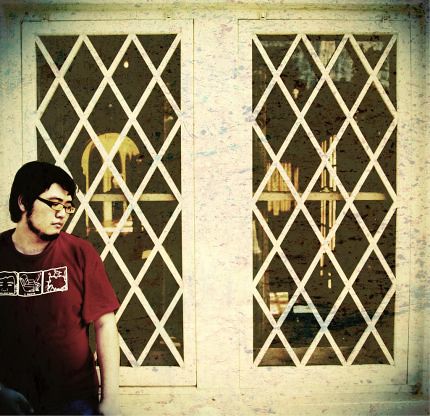 OK, so my friend isn't actually applying for college but I thought this was a pretty decent photo illustration, haha.
OK, so my friend isn't actually applying for college but I thought this was a pretty decent photo illustration, haha.The year before I began college I started a lively correspondence with a new online pal who ended up being my freshman year roommate and my college best friend. When I asked why she, an Austinite, would be attending UTSA, she replied, "Oh, apparently UT let too many students into the 2002 class because they underestimated the Top 10 percent that year, so they rectified it this year by not letting most of us get in. Instead, we're getting bumped to the CAP program."
That was my first experience with the dreaded Top 10. As a homeschooled-through-high-school expat living in Taiwan, I had no idea Texas high schoolers had these percentages to worry about. (Although I heard about a similar, perhaps even more intense set of worries from my friends in Taiwan) Since then, I have encountered the Magic Number a few times - as a journalism student pursuing my first local school district story, as a high school counselor on weekends, and most recently in my Texas government textbook.
My friend's situation was not unique for the high school class of 2003. Most of my friends from that year "enjoyed" the CAP experience, which is a program designed to send students interested in attending UT a year away at one of the sister campuses with priority transfer status the following year (if, of course, they maintain a good GPA). "I was a good student, but there were just better ones in my year. Gradewise, I was fine, but I was in the top 11 percent," my friend said. "Normally that wouldn't be a big deal - I'd still be able to get into UT - but that year, 10 percent was the cutoff."
The original concept of the
Hopwood v. Texas law is pretty smart. If high schoolers find it easy to get into Texas universities, they will be that much more likely to stay in the state and give back to the community, as it were.
The suit was created as a protest to affirmative action. As an Asian-American studies major, I have heard rumors of high schools in California where the most discriminated-against groups are Asian girls, because they tend to be some of the smartest in the area. "If you're an Asian girl in certain suburbs of San Francisco," a friend's mom warned, "Good luck getting in to ------ High School." The good thing about the Top 10 law is that merit, not race, is what earns you rewards. But are we giving out too many rewards? Are they fairly offered?
How many steps up is Top 10 an improvement from affirmative action?
Today's problem is that there are too many high schools and high schoolers - the sheer numbers of top-tens fill up university admissions slots too soon, leaving everyone behind the cut-off line at a loss. The issue only seems to escalate every year.
The real question is this. Every concept has its pros and cons. While Top Ten [hopefully] eliminates affirmative action, does it build up the social disparity gap? In the text we noted that Demetrio Rodriguez's fight for school equality argued that his daughter's school district was far poorer than that of her neighboring one, and the financial gap was mirrored in the quality of their educational standards. Arguably, a top-20 student from a very poor-quality high school would be far less academically prepared for college than would a top-20 student from one of Austin's finest schools.
Westwood High School in the RRISD is nationally ranked - in 2005, I think, they placed fifth in Texas high schools
according to Newsweek. Suppose the average top-10 Westwood junior's SAT score is 2100. Now suppose another high school's similar average is a 1500. Would it be fair to a top-25 Westwood high schooler with an 1800 SAT score to be turned down over a High School B top-ten student just because there were no more slots?
A
bill was passed this May,
amending the original law to cap top-10 admission at any university to 60 percent of that college's admission number for that year. In reality, the only school this really affects is UT, because Texas is the biggest and most prestigious of the state's public university systems. The current top-10 admissions ratio teeters at around 70 percent of UT's incoming freshmen each year, making it increasingly difficult for non-top 10 students to get in.
Let's see how this affects the 2008 incoming class.

